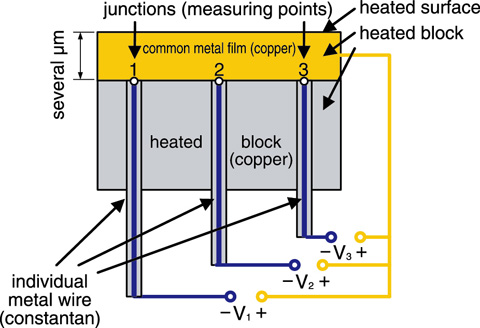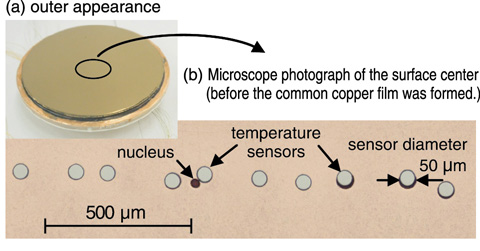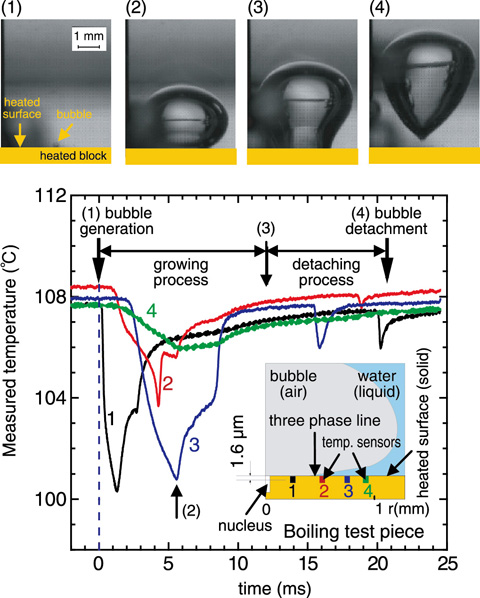
Fig.8-6 Principle of new temperature sensors

Fig.8-7 Boiling test piece with new temperature sensors installed

Fig.8-8 Experimental results of temperature distribution just below a boiling bubble
Boiling has an extremely high heat transfer coefficient and is widely used in equipments such as heat exchangers, boilers, and boiling water reactors. It has been studied extensively, but its mechanism still remains unknown. This research developed a measuring technology for the surface heat flux and surface temperature. Pool boiling experiments were performed to elucidate the heat transfer mechanism.
The following technologies are required for the measurement of the surface heat flux and temperature below a boiling bubble.
(1) A non-contact measurement technique without the installation of sensors on the surface
(2) A high spatial resolution technique to make measurements at least to three points per 1 mm, considering that the contact area of a boiling bubble with its heated surface has a radius of only about 1 mm
(3) A rapid response technique to trace boiling, which is a fast phenomenon with the highest frequency component at more than 500 Hz
To achieve (1), we introduced an analytical approach to heat conduction in which the surface temperature and surface heat flux are calculated simultaneously using the measured body temperature. To achieve (2), we need to install temperature sensors inside the body at a high density of three or more points per 1 mm because the spatial and time resolutions of the calculated values depend on those of the measured temperatures. Moreover, the sensors must be located in close proximity to the heated surface to achieve (3).
To meet these requirements, we developed a new temperature sensor. The concept is shown in Fig.8-6. Multiple temperature junctions are formed in a copper block. Each junction has an insulated constantan wire as its negative pole, but shares a common positive pole made of copper. The common pole can be formed by sputtering technology, so the junctions can be located in close proximity beneath the surface. Fig.8-7 shows a boiling test piece with the new temperature sensors installed. We established the manufacturing technology for placing the new sensors at a high density of up to six points per 1 mm and in close proximity to the surface (less than 2 μm beneath the surface).
We performed pool boiling experiments. Here, a test piece with four temperature sensors installed within 1 mm at a depth of 1.6 μm beneath the surface was used. As shown in Fig.8-8, we succeeded in deriving the temperature distribution just below a bubble. The sensors show their lowest temperatures when the solid-gas-liquid three-phase line reaches their positions, and this confirms the reasonableness of the hypothesis that heat transfer near the three-phase line dominates the boiling heat transfer.
The present study was entrusted by the Ministry of Education, Culture, Sports, Science and Technology of Japan (MEXT).